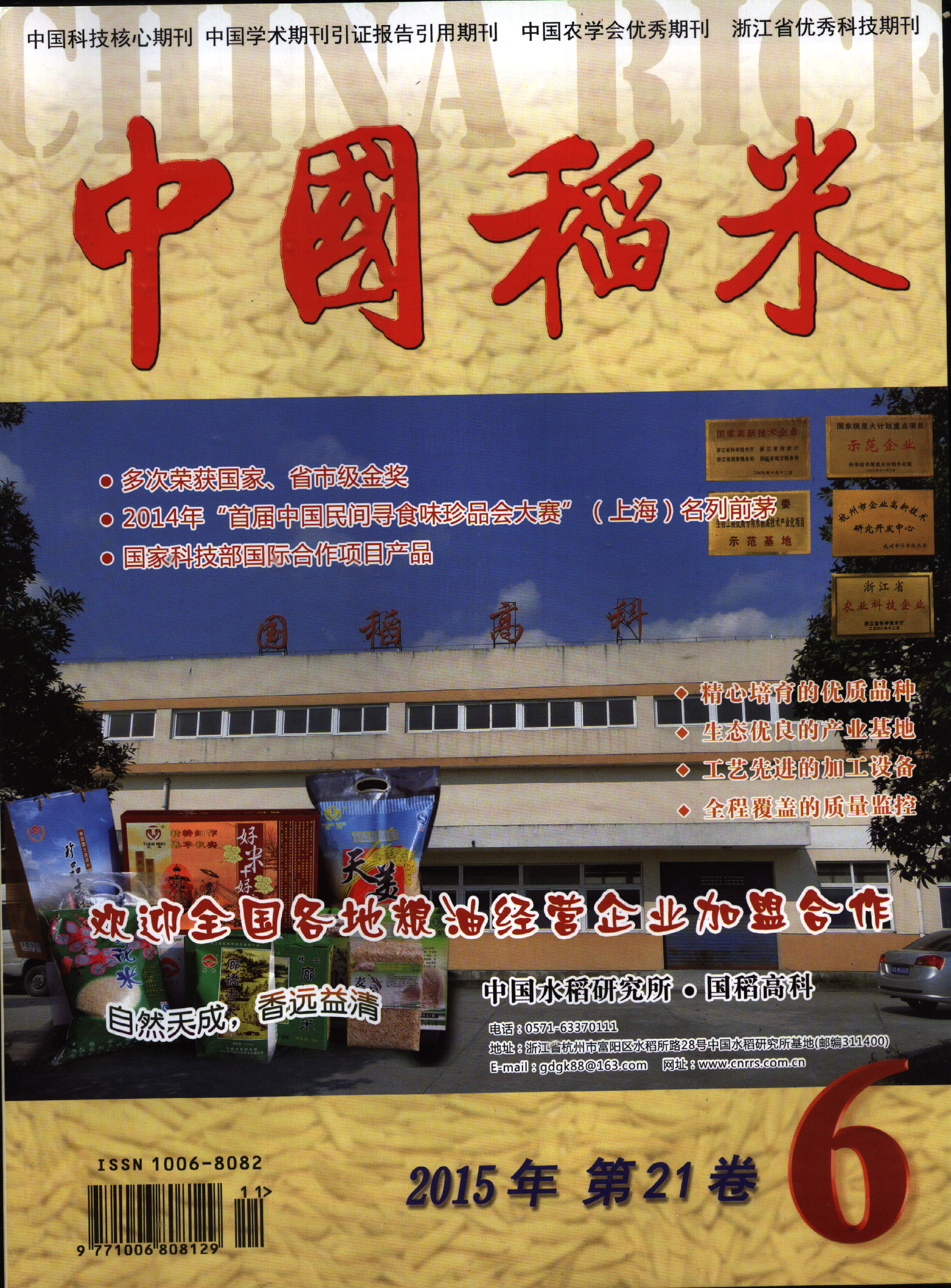|
|
The Influence of Different Climatic Ecological Conditions on Rice Quality Traits in Northern China
WANG Jiao-1 2 3, WANG Jie-2, QIANG Ai-Ling-3, GUAN Jing-De-4, SUN Guo-Cai-5, SUN Jian-Chang-3, QI Guo-Feng-6, WANG Xing-Sheng-3*, HAN Long-Zhi-2*
2015, 21(6):
13-18.
DOI: 10.3969/j.issn.1006-8082.2015.06.003
Taking the rice varieties in northern rice regional test as experimental materials, seven quality traits of medium and early maturity rice variety groups in Yongning site (Ningxia) and Kaiyuan site (Liaoning) from 2001 to 2013 were analyzed. The results showed that the head rice rate and gel consistency in Kaiyuan site are significantly higher than Yongning site, the chalky rice rate and chalkiness degree in Yongning site are significantly lower than Kaiyuan site. There are no significant difference between two sites regarding brown rice rate, milled rice rate and amylose content. Within seven quality traits, the coefficient of variation for the chalky rice rate and chalkiness degree are relatively larger, the coefficient of variation for the head rice rate, amylose content and gel consistency are the medium, the coefficient of variation for the brown rice rate and milled rice rate are relatively smaller. Comparison of the meteorological factor between Yongning site and Kaiyuan site during the heading and filling stage from August to September were conducted, which shows that the mean temperature, max temperature, min temperature and hours of sunshine are similar in two sites. The dekad precipitation and relative humidity in Yongning site are significantly lower than Kaiyuan site. The results of the correlation analysis for rice quality traits and meteorological factors shows that the rice quality traits is more closely related to the meteorological factor in September than in August. The results of the correlation between brown rice rate and relative humidity, head rice rate and relative humidity, head rice rate and the maximum temperature, brown rice rate and precipitation are opposite in Yongning site and Kaiyuan site, which may be caused by the different relative humidity and precipitation in two sites. Therefore, the complexity of the rice quality is the results of coupling effects under different climate ecological background.
|

